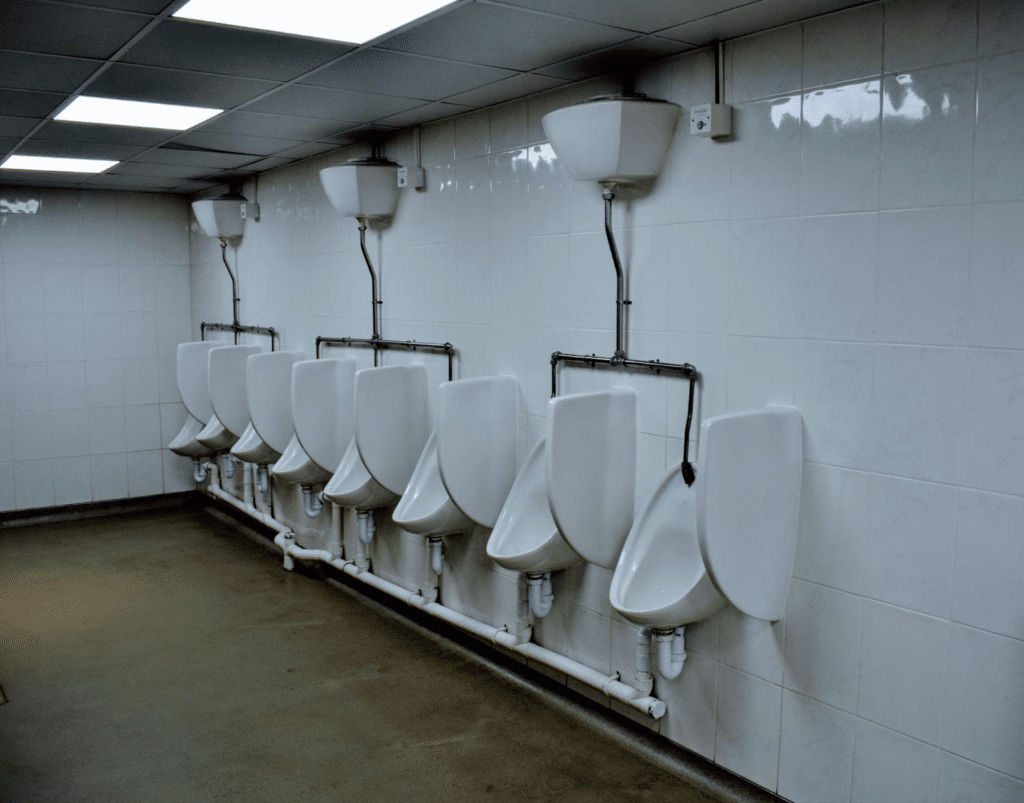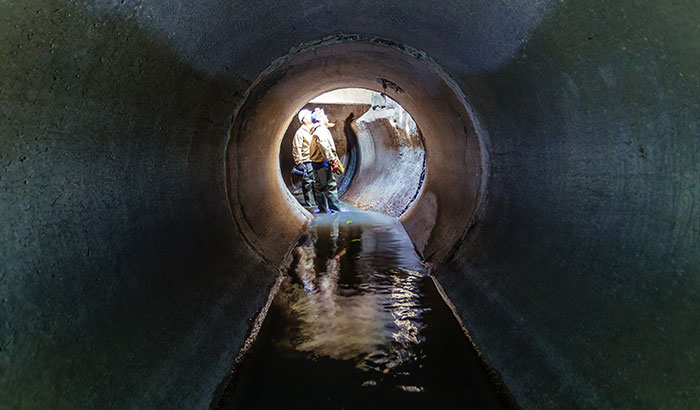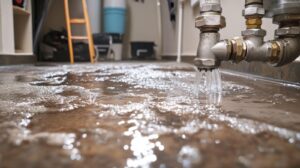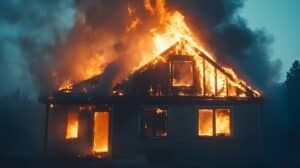Sewage damage in a business can be a serious issue that requires immediate attention. It not only affects the structural integrity of the building but also poses significant health risks to occupants.
Building damage caused by sewage can occur for various reasons, such as a broken sewer line, clogged drains, and overflowing toilets. As a business owner, it’s important to be aware of the signs of sewage damage to take prompt action and prevent further building damage.
This article will discuss the signs of sewage damage in a business and what steps you can take to address the issue.
1- Turn off the water
When you suspect sewage damage in your business, the first step is to turn off the water supply to the affected area. This is crucial to prevent further building damage and to ensure the safety of everyone in the building. Turning off the water supply will stop the flow of sewage or contaminated water into the area, reducing the risk of electrical hazards, slip and fall injuries, and other safety concerns.
To turn off the water supply:
- Locate the main valve that controls the water supply to your building. This may be located outside the building, in a utility closet, or the basement.
- Turn the valve clockwise to shut off the water supply.
- If you cannot locate the valve or if the valve is damaged, contact a plumber or your local water authority for assistance.
- Check for pipe burst damage.
- Evacuate the area
If the sewage damage is severe, it may be necessary to evacuate the affected area to ensure the safety of everyone in the building. This is especially important if standing water or sewage is present, as it can pose significant health risks.
2 – Evacuate the area
It’s essential to educate your employees on how to recognize the signs of sewage damage and what to do in the event of an emergency. Provide clear instructions for turning off the water supply and evacuating the building if necessary. Ensure that everyone in the building knows who to contact in an emergency.
Evacuation may also be necessary if there is a risk of electrical hazards or the area is structurally unstable.
To evacuate the area:
- Alert everyone in the building to leave immediately.
- Provide clear instructions for where and how to exit the building safely.
- If necessary, call emergency services for assistance.
- Once everyone is out of the building, do not allow anyone to re-enter until it is safe.
- Contact a professional restoration company.
3 – Document the damage
Before the restoration company arrives, it’s important to document the damage for insurance purposes. Take photos and videos of the damage to provide to your insurance company. This will help you get the coverage you need to cover the restoration cost.
When documenting the damage, be as thorough as possible. Take photos of the affected areas from multiple angles, including close-ups of damaged materials or items. Make note of any odors or other issues you notice, as these may be important for the restoration company to know.
4 – Clean and disinfect
Once the restoration company has arrived, they will begin the cleanup and disinfection process. This may involve removing any standing water, drying out the area thoroughly, and using specialized equipment to sanitize the area and prevent the spread of bacteria and mold.
The restoration company will also remove any damaged materials that cannot be salvaged, such as drywall, insulation, or carpeting. This is important to ensure the area is completely sanitized.
Once the affected areas have been cleaned and disinfected, it is time to begin the drying process. This may involve using fans, dehumidifiers, or other equipment to completely dry the area. This is crucial to prevent mold growth and ensure the area is safe for occupants to return.
5 – Repair and replace damaged items
After the area has been cleaned and disinfected, it is recommended that a restoration company assess the damage and determine what needs to be repaired or replaced. This may include replacing damaged drywall, flooring, or other materials. It’s important to address all the damage to prevent further issues.
6 – Prevent future damage
Once the damage has been repaired, it’s important to take steps to prevent future sewage damage. This may include regular plumbing system maintenance, such as cleaning drains and inspecting pipes for damage. Also, consider installing backflow preventers to prevent sewage from backing up into your business.
Also, consider investing in flood insurance to protect your business against the financial impact of sewage damage. Flood insurance can cover the cost of repairs and replacements and the cost of a temporary relocation if your business is forced to close temporarily.

Call a Professional Restoration Company
If your business has been affected by sewage damage, the best thing to do is to call a professional to take care of the cleanup.
And here’s why:
Sewage damage is a complex and potentially dangerous issue that should be left to professional restoration companies to handle. The following are several reasons why it is highly recommended to hire professionals for sewage damage cleanup:
Potential health risks
Sewage damage in a business can pose several potential health risks to employees and customers, including:
- Bacterial infections: Sewage water contains a variety of harmful bacteria, including E. coli, Salmonella, and Shigella. Exposure to these bacteria can cause infections, leading to symptoms such as nausea, vomiting, diarrhea, fever, and abdominal pain.
- Viral infections: Sewage water can also contain various viruses, such as hepatitis A, rotavirus, and norovirus. Exposure to these viruses can cause gastrointestinal symptoms, including vomiting and diarrhea.
- Fungal infections: Sewage damage can also lead to the growth of mold and other fungi, which can cause respiratory problems, including asthma and allergies. Prolonged mold exposure can also lead to more severe health problems like lung infections and fungal sinusitis.
- Parasitic infections: Sewage water can contain parasites, such as Cryptosporidium and Giardia, which can cause gastrointestinal symptoms, including diarrhea and abdominal cramps.
- Chemical exposure: Sewage water may contain chemicals, such as cleaning agents and pesticides, which can cause irritation to the skin and eyes. In some cases, exposure to these chemicals can cause more severe symptoms, including respiratory problems and neurological damage.
It’s important to note that these health risks can be particularly dangerous for individuals with weakened immune systems, such as young children, elderly adults, and those with chronic illnesses. Additionally, the longer sewage damage goes untreated, the greater the risk of exposure to these contaminants and the potential health consequences. This is why seeking professional help immediately after discovering sewage damage in your business is crucial.
Extensive and complex damage
Sewage damage can be extensive and complex, affecting the visible surfaces and hidden areas like behind walls, under flooring, and HVAC systems. Without proper training and equipment, it’s difficult to identify and address all the affected areas, leading to ongoing issues like mold growth and structural damage. Professionals have the expertise and tools necessary to assess the extent of the damage and develop a comprehensive restoration plan.
Specialized techniques and equipment
Sewage damage cleanup requires specialized techniques and equipment most people cannot access. Professional restoration companies use various tools, including high-powered vacuums, air movers, dehumidifiers, and antimicrobial agents, to extract water, dry the affected areas, and disinfect surfaces. They also have access to advanced technology like moisture meters, infrared cameras, and thermal imaging to accurately assess the extent of the damage.
Expedited cleanup and restoration
Hiring a professional restoration company can help expedite the cleanup and restoration process, minimizing downtime for your business. They can work quickly and efficiently to repair and replace damaged items. They also provide recommendations for materials and products resistant to water damage and mold growth, ensuring that your business is protected against future sewage damage.
Licensing and insurance
Professional restoration companies are typically licensed and insured, which means they have met certain standards and requirements set by industry regulators. This gives you peace of mind knowing that the company is qualified to handle the job and will be held accountable if anything goes wrong during the restoration process.
Proper disposal of contaminated materials
Professional restoration companies are trained to properly dispose of contaminated materials, including sewage, so they do not pose a risk to the environment or public health.
Federal and state laws and regulations regulate the disposal of sewage-damaged materials.
Here are some of the laws and regulations that businesses need to be aware of when disposing of sewage-damaged materials:
- Resource Conservation and Recovery Act (RCRA): RCRA is a federal law regulating hazardous waste handling and disposal. Sewage-damaged materials, such as contaminated carpets, drywall, and insulation, may be considered hazardous waste under RCRA, depending on the contaminants present. Businesses must comply with RCRA regulations when disposing of hazardous waste.
- Occupational Safety and Health Administration (OSHA): OSHA sets standards for worker safety, including exposure to hazardous materials like sewage. Businesses must comply with OSHA regulations when handling and disposing of sewage-damaged materials to protect workers’ health and safety.
- Environmental Protection Agency (EPA): The EPA sets regulations for the disposal of hazardous waste, including sewage-damaged materials. When disposing of hazardous waste, businesses must comply with EPA regulations, such as the hazardous waste generator requirements.
- State regulations: In addition to federal regulations, states may have their own laws and regulations for the handling and disposal of hazardous waste. Businesses must comply with state regulations when disposing of sewage-damaged materials.
When disposing of sewage-damaged materials, businesses must follow specific procedures to comply with these regulations, such as properly labeling and storing hazardous waste, using authorized transporters and disposal facilities, and keeping records of waste disposal.
Non-compliance with these regulations can result in fines, penalties, and legal issues.
It’s vital for businesses to work with licensed and experienced hazardous waste disposal companies that are familiar with these regulations to ensure that contaminated materials are properly disposed of in compliance with all applicable laws and regulations.
Black Diamond Restoration Can Help
Black Diamond Restoration provides 24/7 sewage, water, mold, fire, smoke, and storm damage restoration to the greater Salt Lake and Utah Valley areas. Call us at 801.905.8062 to schedule your service.
toto slot






